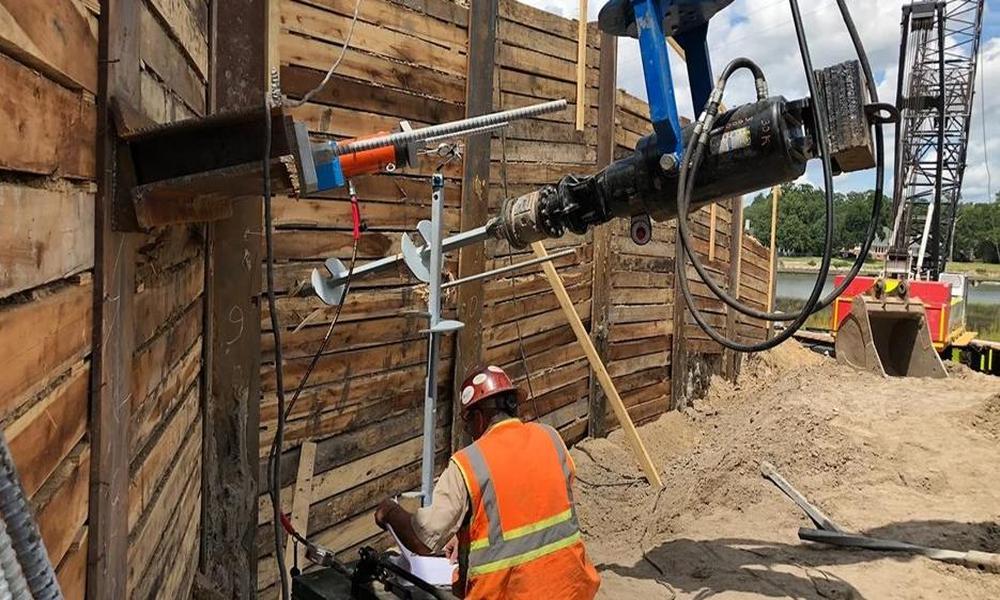The construction industry is an arena where safety and stability are paramount. A significant component that contributes to these factors is the proper use of tie back anchors. These essential tools provide necessary support and stabilization to structures, making them invaluable in various construction and excavation projects. This article explores how the effective use of tie anchors can maximize safety in construction environments.
Understanding Tie Back Anchors
Before delving into their safety implications, it’s crucial to understand what tie anchors are and their primary function. Essentially, they are anchoring systems used in construction to support retaining walls or similar structures. They work by transmitting the load from the structure to a stable ground layer, providing additional stability and preventing any potential movement or collapse.
The Importance of Effective Use
Using tie anchors effectively is crucial to maintaining a safe working environment. When these anchors are not used correctly, the risk of accidents and injuries increases substantially. Here are some key reasons why the effective use of tie anchors is of utmost importance:
Fall Prevention
The primary purpose of tie anchors is to prevent falls. When properly installed and utilized, tie anchors offer a reliable point of attachment for workers’ fall protection equipment, such as harnesses and lanyards. This prevents workers from falling from heights and suffering severe injuries or even fatalities.
Even Load Distribution
Tie back anchors are designed to distribute the force of a fall across a structure, minimizing the impact on a single point. This even distribution of force reduces the risk of the anchor point failing under the strain, enhancing the overall safety of the worker.
Compliance with Regulations
Numerous regulations and standards are in place to ensure the safety of workers who are operating at heights. By using tie anchors in accordance with these regulations, employers not only protect their workforce but also ensure compliance with legal requirements. Failure to comply with these regulations can result in fines, legal liabilities, and reputational damage.
Enhanced Productivity
When workers feel safe and secure in their working environment, their productivity tends to increase. Effective use of tie anchors instills confidence in workers, allowing them to focus on their tasks without constantly worrying about their safety.
Best Practices for Using Tie Back Anchors
Proper Installation
One of the most critical aspects of maximizing safety with tie anchors is their correct installation. Poorly installed anchors can compromise the safety of a structure and lead to disastrous consequences. Therefore, it’s imperative to follow the installation guidelines, which typically involve drilling a hole into the ground, inserting the anchor, and then applying tension.
Regular Inspections
Regular inspections are another vital practice to ensure the effectiveness and safety of tie anchors. Over time, anchors may experience wear and tear or other forms of damage. Regular inspections can help identify any potential issues early, allowing for timely repairs or replacements.
Correct Attachment Techniques
Workers must be trained in the correct techniques for attaching themselves to tie anchors. This includes using the appropriate fall protection equipment and ensuring that the connections are secure before beginning work.
Weight Limit Consideration
Tie back anchors have weight limits that must not be exceeded. Employers should ensure that workers are aware of these limits and do not overload the anchor point, which could lead to its failure.
The Role of Tie Back Anchors in Future Construction
With advancements in technology and a greater emphasis on safety, the importance of tie anchors in construction is set to increase. More robust and efficient anchoring systems are being developed, promising enhanced safety and stability for construction projects. As these advancements continue, the effective use of tie anchors will remain a cornerstone of safe and successful construction practices.
The Bottomline:
Tie back anchors, when effectively used, have a profound impact on the safety and stability of construction projects. They mitigate risks associated with soil movement, enhance structural stability, and safeguard against environmental factors. By adhering to best practices such as proper installation, regular inspections, and engaging qualified professionals, the safety benefits of tieanchors can be maximized. As the construction industry continues to evolve, these anchors’ role in ensuring safety and stability will undoubtedly remain significant.

